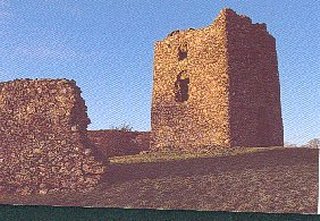The Kilnasaggart Stone plaque recently referred to continues with a description of its carvings:
‘On the north-west face are ten carefully-carved crosses, nine of them within circles and, low down, a number of parallel linear marks, once interpreted as a possible ogham inscription but actually knife-sharpening score marks. Traditionally a crock of gold was buried below the pillar and it was overturned by treasure-seekers in the 1830s, but it was soon reset.
Excavations in the 1960s to the south of the pillar revealed a number of both stone-built and dug graves, probably dating from the Early Christian period. A map of 1609 shows a ruined church in this area but there are no visible remains and no trace was found during the excavation.’
Your editor considers that the early 1960s excavations of this, the Slieve Gullion tombs, Ballymacdermott Court Cairn etc. were less that complete and must at best be treated as indicative. We baulk at terms like ‘actually’ above, used in relation to a dubious theory at best. The stories of the cemetery excavation – and the overturning of the pillar in search of booty – have already been related here. The sentence beginning, ‘Traditionally a crock of gold was buried below the pillar..’ is at best unclear and at worst an unintended enticement to further vandalism. There is certainly no evidence to support the allegation. There is no indication of the possible greater antiquity of this standing stone already debated here (and on Guestbook).
Though there is no extant evidence of an early church on the site, we believe the circumstantial evidence (the location at the Gap of the North on the ancient Slighe Miodluachra (next story!); the overscored Christian symbols on a more ancient pillar; the nearness of Moninna’s convent at Killeavy and that of Bridget at Faughart; the 1609 map; the name, Kilnasaggart meaning Church of the Priest) points to that distinct possibility.
